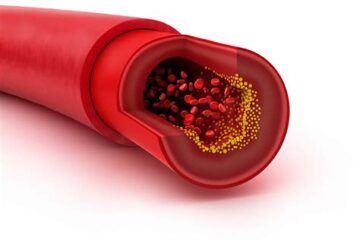
In this post ,USPTF Recommends against post-menopausal HRT to prevent chronic disease @יואל קסלר, we discuss the recently released USPTF recommendation against the use of HRT to prevent chronic disease in post menopausal women. The full article can be found at JAMA Network here.
The following is a reprint of the abstract explaining the USPTF conclusions originally published by JAMA Network and reprinted here
Update of Previous USPSTF Recommendation
This recommendation replaces the 2017 USPSTF recommendation on hormone therapy for the primary prevention of chronic conditions in postmenopausal women. In 2017, the USPSTF recommended against the use of combined estrogen and progestin for the primary prevention of chronic conditions in postmenopausal women and against the use of estrogen alone for the primary prevention of chronic conditions in postmenopausal women who have had a hysterectomy.18 This recommendation is consistent with the 2017 USPSTF recommendation.
To update its 2017 recommendation statement, the USPSTF commissioned a systematic review of the evidence on the benefits and harms of systemic (ie, oral or transdermal) hormone therapy for the prevention of chronic conditions in postmenopausal persons and whether outcomes vary by age or by timing of intervention after menopause.8,9 The use of hormone therapy for the treatment of menopausal symptoms (eg, vasomotor hot flashes or vulvovaginal symptoms) or for other indications is outside the scope of this recommendation.
Benefits and Harms of Preventive Medication
The USPSTF found 20 randomized clinical trials that compared the effects of estrogen, either alone or in combination with progestin, vs placebo for the prevention of chronic conditions.8,9 Of these studies, the WHI trials were the only studies powered to assess the effectiveness of hormone therapy for the primary prevention of various chronic conditions. The WHI trials enrolled postmenopausal persons aged 50 to 79 years; the mean age of participants was 63 years. The WHI compared 0.625 mg/d of oral conjugated equine estrogen, with or without 2.5 mg/d of medroxyprogesterone acetate, with placebo. Evidence on other types, doses, or modes of delivery of hormone therapy was limited. The WHI also had the longest durations of follow-up, with a median intervention of 7.2 years for the estrogen-only trial and 5.6 years for the estrogen plus progestin trial, as well as long-term follow-up of up to 20.4 years.7,19 The following discussion focuses on coronary heart disease outcomes, all-cause mortality, and outcomes for which the USPSTF assessed the evidence as adequate or convincing for benefit or harms. Other outcomes and more details are available in the accompanying systematic evidence review.8
Observational evidence has suggested that there might be a protective effect of menopausal hormone therapy on coronary heart disease; however, the WHI and other trials of menopausal hormone therapy have not demonstrated such an effect. A pooled analysis of 3 trials (n = 18 085) showed no significant difference in risk of coronary heart disease events in persons treated with estrogen plus progestin compared with placebo (2.8% vs 2.6%; relative risk [RR], 1.12 [95% CI, 0.94-1.33]) during a mean follow-up of 4 years. Similarly, a pooled analysis of 3 trials (n = 11 310) found no significant difference in coronary events between persons taking estrogen alone and those taking placebo (RR, 0.95 [95% CI, 0.79-1.14]) during a mean follow-up of 4.1 years.8,9
Because estrogen generally stimulates breast cell proliferation, trials of menopausal hormone therapy have reported on the risk of breast cancer as one of the primary adverse outcomes of treatment.
In the WHI (n = 16 608), persons randomized to estrogen plus progestin had a significantly increased risk of invasive breast cancer compared with those taking placebo (2.4% vs 1.9%; hazard ratio [HR], 1.24 [95% CI, 1.01-1.53]),7 which persisted during postintervention follow-up.20 Other trials either reported few cases of breast cancer or were generally consistent with the WHI findings in direction of effect. In the WHI, during 20.3 years of follow-up, the point estimate of the risk of breast cancer mortality was higher for persons in the estrogen plus progestin group than those in the placebo group, although the difference did not reach statistical significance (HR, 1.35 [95% CI, 0.94-1.95]).19
Four trials reported on the effects of estrogen alone on breast cancer; however, only the WHI followed participants for more than 3 years. At 20.7 years of follow-up, the WHI reported a lower risk of invasive breast cancer among persons assigned to estrogen alone compared with those assigned to placebo (HR, 0.78 [95% CI, 0.65-0.93]),20 although the risk of breast cancer was not significantly lower during the study’s 7.2-year intervention phase.7,21 The other trials reported very few cases of breast cancer.8,9 The WHI also reported on breast cancer mortality. At 20.7 years of follow-up, persons who received estrogen alone during the intervention phase had a lower risk of breast cancer mortality than those in the placebo group (HR, 0.60 [95% CI, 0.37-0.97]).19
Five trials reported on fracture risk in persons randomized to estrogen plus progestin compared with placebo. A pooled analysis of these trials (n = 20 499) found a statistically significant reduction of fractures in persons taking estrogen plus progestin (8.7% vs 10.9%; RR, 0.79 [95% CI, 0.66-0.94]).8,9
The WHI (n = 10 739) also found a lower risk of total fractures in persons taking estrogen alone compared with placebo during the intervention phase (1.53% annualized vs 2.14% annualized; HR, 0.72 [95% CI, 0.64-0.80]),7 which persisted during 4.3 years of postintervention follow-up.22 A smaller trial found fewer fractures at all sites in the estrogen-alone group, although the difference was not statistically significant.23
Two trials reported on the effects of menopausal hormone therapy on incident diabetes. In the WHI (n = 15 874), fewer persons randomized to estrogen plus progestin reported a new diagnosis of diabetes compared with those taking placebo (HR, 0.81 [95% CI, 0.70-0.94]).7,24 A smaller trial also found a reduced risk of incident diabetes, although that was a post hoc analysis.25
In the WHI (n = 9917), fewer persons taking estrogen alone reported a new diagnosis of diabetes compared with those taking placebo (1.34% annualized vs 1.55% annualized; HR, 0.86 [95% CI, 0.76-0.98]).7
Four trials reported on the incidence of colorectal cancer in persons randomized to estrogen plus progestin therapy. In the WHI estrogen plus progestin trial (n = 16 608), persons randomized to estrogen plus progestin had a lower risk of colorectal cancer than those in the placebo group (0.59% vs 0.93%; HR, 0.62 [95% CI, 0.43-0.89]) over a median follow-up of 5.6 years.7 The other trials either reported few cases of colorectal cancer or were generally consistent with the WHI findings in direction of effect.8,9
The WHI estrogen-alone trial (n = 10 739) reported no significant difference in the risk of colorectal cancer between persons randomized to estrogen alone and those taking placebo (1.2% vs 1.1%; HR, 1.15 [95% CI, 0.81-1.64]) during 7.2 years.7
Five trials reported on risk of thromboembolism. In the WHI (n = 16 608), persons randomized to estrogen plus progestin had an increased risk of venous thrombosis (1.96% vs 0.94%; HR, 2.06 [95% CI, 1.57-2.70]), deep vein thrombosis (1.4% vs 0.8%; HR, 1.87 [95% CI, 1.37-2.54]), and pulmonary embolism (1.0% vs 0.5%; HR, 1.98 [95% CI, 1.36-2.87]) compared with those in the placebo group.7,26 Other trials either reported few thromboembolic events or were consistent with the WHI findings.8,9
In the WHI (n = 10 739), persons randomized to estrogen alone had an increased risk of deep vein thrombosis (1.6% vs 1.0%; HR, 1.48 [95% CI, 1.06-2.07]); the risk of pulmonary embolism was higher in the estrogen group than in the placebo group, but results were not statistically significant, although the confidence interval was wide (0.98% vs 0.72%; HR, 1.35 [95% CI, 0.89-2.05]).7
The WHI found an increased risk of stroke with both estrogen plus progestin and estrogen-alone therapy. Stroke risk was significantly higher in persons randomized to estrogen plus progestin compared with those randomized to placebo (1.9% vs 1.3%; HR, 1.37 [95% CI, 1.07-1.76]).7 Similarly, persons receiving estrogen alone had a statistically significant higher risk of stroke compared with those receiving placebo (3.2% vs 2.4%; HR, 1.35 [95% CI, 1.07-1.70]).7 A smaller trial reported that stroke risk was similar in estrogen plus progestin and placebo groups, although the confidence interval was quite wide.27
The Women’s Health Initiative Memory Study was a substudy of the WHI, evaluating the risk of dementia in persons randomized to estrogen plus progestin or estrogen alone compared with placebo. That study found that persons randomized to estrogen plus progestin (n = 4523) had a higher risk of probable dementia than those taking placebo (1.8% vs 0.9%; HR, 2.05 [95% CI, 1.21-3.48]).28 No significant increase in risk of probable dementia was found in persons taking estrogen alone (n = 2947).29
Two trials reported on the risk of gallbladder disease in persons taking menopausal hormone therapy. The WHI (n = 14 203) reported a significantly higher risk of gallbladder disease in persons randomized to estrogen plus progestin treatment compared with those randomized to placebo (1.31% annualized vs 0.84% annualized; HR, 1.57 [95% CI, 1.36-1.80]) and in persons randomized to estrogen alone (n = 8376; 1.64% annualized vs 1.06% annualized; HR, 1.55 [95% CI, 1.34-1.79]).7 A smaller trial reported few cases of gallbladder disease.30
Two trials reported on incident urinary incontinence (self-reported) in persons taking estrogen plus progestin; both found increased risk. In the WHI (n = 10 073), 16.6% (annualized) of persons taking estrogen plus progestin reported incident incontinence after 1 year of treatment, compared with 11.1% (annualized) of those taking placebo (HR, 1.49 [95% CI, 1.36-1.63]).7 A smaller trial also reported increased risk.31 Similarly, in persons randomized to estrogen alone, the WHI found a higher risk of urinary incontinence at 1 year (22.6% annualized vs 14.0% annualized; HR, 1.61 [95% CI, 1.46-1.79]) and 6.6 years after stopping treatment (28.6% vs 23.1%; HR, 1.24 [95% CI, 1.13-1.35]).7
A pooled analysis of 3 trials (n = 19 580) showed no significant difference in all-cause mortality between persons taking estrogen and progestin therapy and those taking placebo (RR, 1.01 [95% CI, 0.88-1.16]) during 3.2 to 5.6 years of follow-up. Similarly, a pooled analysis of 3 trials (n = 11 587) showed no significant difference in all-cause mortality between persons receiving estrogen alone and those receiving placebo (RR, 1.04 [95% CI, 0.89-1.21]) during a mean follow-up of 7.1 years.8,9
Effects on Outcomes by Age or Timing of Intervention
It has been hypothesized that the benefits and harms of menopausal hormone therapy might differ based on participants’ age or timing of initiation of therapy with respect to menopause. Accordingly, the WHI trials reported on outcomes stratified by decade of age and by time since menopause. Of note, the analyses of outcomes by time since menopause were post hoc. For most outcomes, there were no differences based on these parameters.7 The WHI reported no statistically significant differences in risk of coronary heart disease based on age or time since menopause.7 One analysis of the WHI estrogen plus progestin trial reported a statistically significant trend for risk of myocardial infarction (a secondary trial outcome) by time since menopause, with significantly higher risk in persons 20 or more years after menopause,7 while a second analysis found no difference in coronary risk between early (<5 years) vs late (≥5 years) initiation of hormone therapy with respect to menopause.32
The WHI estrogen-alone trial reported statistically significant trends by decade of age for the outcomes of myocardial infarction, colorectal cancer, and all-cause mortality, with lower risk in younger persons and higher risk in older persons, although the confidence intervals in all age groups included the null, with the exception of colorectal cancer, for which risk was significantly increased in 70- to 79-year-old persons.7 Importantly, these findings are all limited by the multiplicity of outcomes and subgroup comparisons conducted (in these analyses, P values were not adjusted for the large number of tests conducted), the relatively small number of events that occurred for several of these outcomes, and the post hoc nature of the time since menopause analyses. Other studies have reported on the effect of timing on the benefits and harms of menopausal hormone therapy, but they are limited by study quality or other issues as well.8,9
The full evidence report published by USPTF can be found here.
If you enjoyed this post " USPTF Recommends against post-menopausal HRT to prevent chronic disease @יואל קסלר" check out other interesting articles on our blog.


